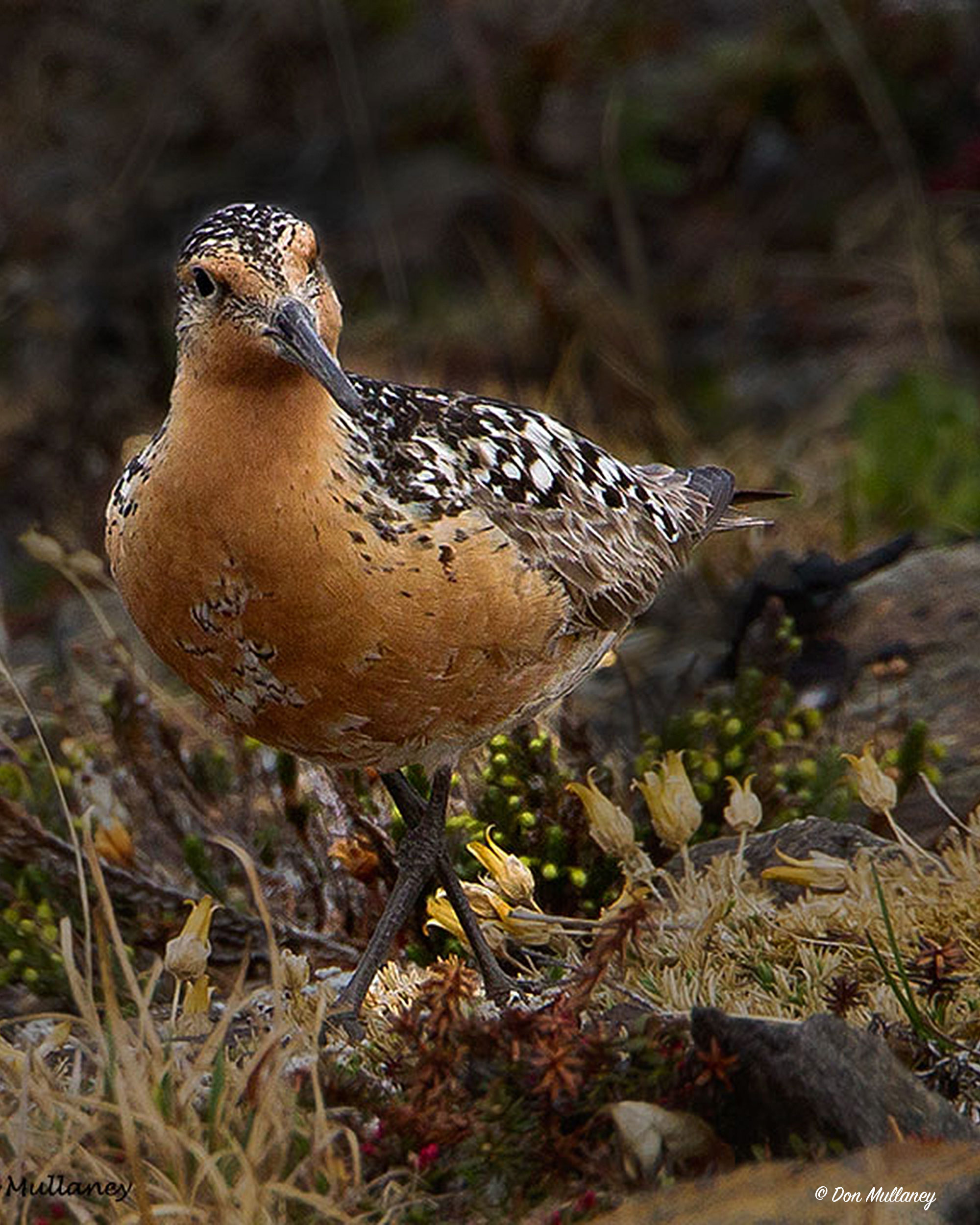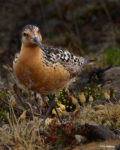
July’s Bird of the Month is the Red Knot, and here is the article in the upcoming July 2018 Kite written by Clive and Celecia Pinnock.
July Bird of the Month – Red Knot
By Clive & Celecia Pinnock
The Red Knot (Calidris canutus rufa) belongs to the family of shorebirds that includes the sandpipers and phalaropes. These birds are the largest of the “peeps” in North America, measuring 10.5” in length with a 23” wingspan. They are also one of the most colorful in breeding plumage, sporting a robin-red chest. Another notable trait of the species is the tremendous distance they travel in their annual migration from Tierra del Fuego at the southern tip of South America to their Arctic breeding grounds, over 9,000 miles.
During the southbound migration and winter months, Red Knots inhabit intertidal zones, especially coastal mudflats, inlets, estuaries, bays and, occasionally, open sandy beaches. During their arctic breeding season, however, they inhabit the tundra, where they nest on the ground on high and barren areas inland; usually near ponds or streams.
Their food consists of invertebrates, especially small clams, snails, crustaceans and marine worms located in the intertidal zone. On the tundra, Red Knots consume large volumes of terrestrial invertebrates such as insects (especially flies) but will also supplement their diet with green vegetation, including shoots, buds, leaves and seeds.
On their northern migration to the Arctic, the primary resting and refueling location for these and other shorebirds such as Sanderlings and Ruddy Turnstones, is New Jersey’s Delaware Bay. The stopover is critically and perfectly timed with the arrival of nesting horseshoe crabs. These strange-looking prehistoric crabs spend the non-breeding phase of their lives in the deep coastal waters of the Atlantic, but, from May through late June, they travel to the shores of Delaware Bay. During the periods of high tide, female crabs with smaller hitchhiking males on their backs come ashore to deposit their protein-rich eggs in the sand. It is these eggs that become the critical refueling source for the birds, giving them extra weight for the fat-burning energy needed to complete their epic northbound journey.
Photographers – please note that next month’s August bird of the month is the Broad-winged Hawk.
Broad Winged Hawk.
Please check out the picture by Don Mullaney in the July KITE cover and to see the slide show of the entire virtual gallery this month, along with photographer etc — click on BOM SLIDE SHOW below the pictures displayed here:
[flickr_set id=”72157698007837194″ max_num_photos=”100″]


Comments are closed